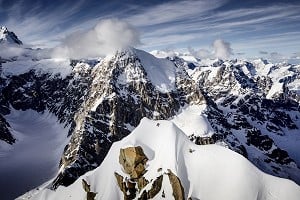I came across the PDF brochure from the Parks Canada service "Waterfall Ice Climbing and Avalanches in Canada’s Mountain National Parks" (see link below) and wondered if it could be a viable system to include in the route descriptions for the UKC logbooks. A quick search of the forum suggests the ATES has never been discussed before, but is somewhat mentioned in the Rockies destination guide (with a link to the brochure).
As it's a relativley simple and easy to understand system, from a safety perspective surely it's a valuable contribution to include, given the increased awareness of avalanche danger to winter climbers. Helping to support decision making in the mountains with regards to snow conditions.
The system is simple and easy to understand and I'll include it below for those who aren't familiar with it (its certainly new to me). I imagine it can be amended to suit UK winter terrain types. Totally open to discussion for the validity of its application to the UK.
1 Simple - Routes surrounded by low angle or primarily forested terrain; possible brief exposure time to infrequent avalanches.
2 Challenging - Routes with brief exposure to starting zones or terrain traps, or long exposure time in the runout zones of infrequent avalanches.
3 Complex - Routes with frequent exposure to multiple overlapping avalanche paths or large expanses of steep, open terrain; multiple avalanche starting zones and terrain traps or cliffs below.
IT wise, I see it as no more complex than having a simple drop down menu with numbers 1-3 to denote each of the three levels of the scale, perhaps automatically including the corresponding scale description with route details. One flaw I imagine would be the requirement for moderators to update details for each crag which is a time consuming and laborious task. A voting system similar to the star rating could also be an option.
What do you guys think? A system worthy of more widespread adoption or unnecessary? I certainly plan to include it in my route descriptions and hopefully in the guidebook I'm currently working on.
Link to Brochure (PDF):
https://www.pc.gc.ca/en/pn-np/ab/banff/visit/~/media/064B1119F2594FCCA15896...
A more detailed breakdown of the ATES can be seen here:
http://www.pc.gc.ca/en/pn-np/mtn/securiteenmontagne-mountainsafety/avalanch...
Sorry for the long post!







